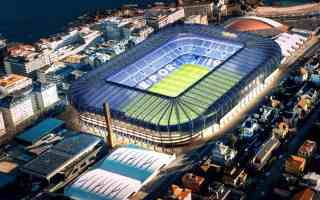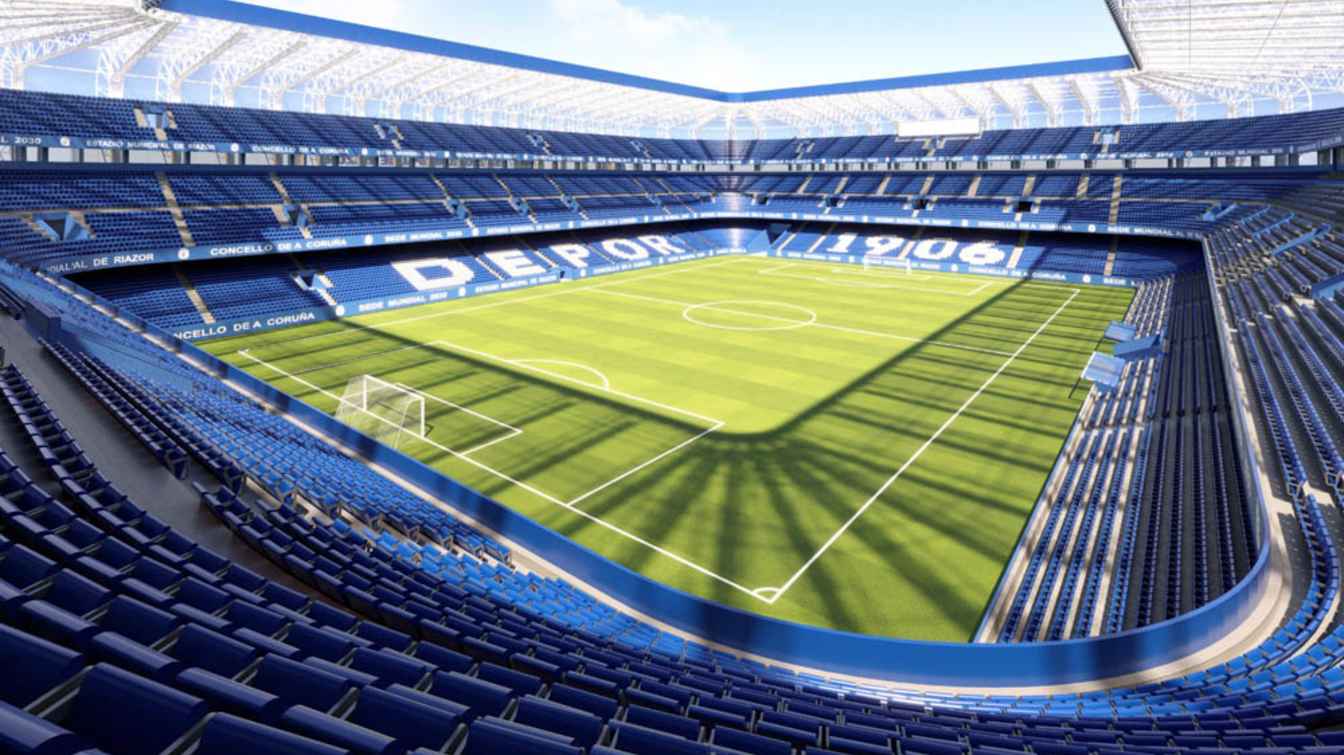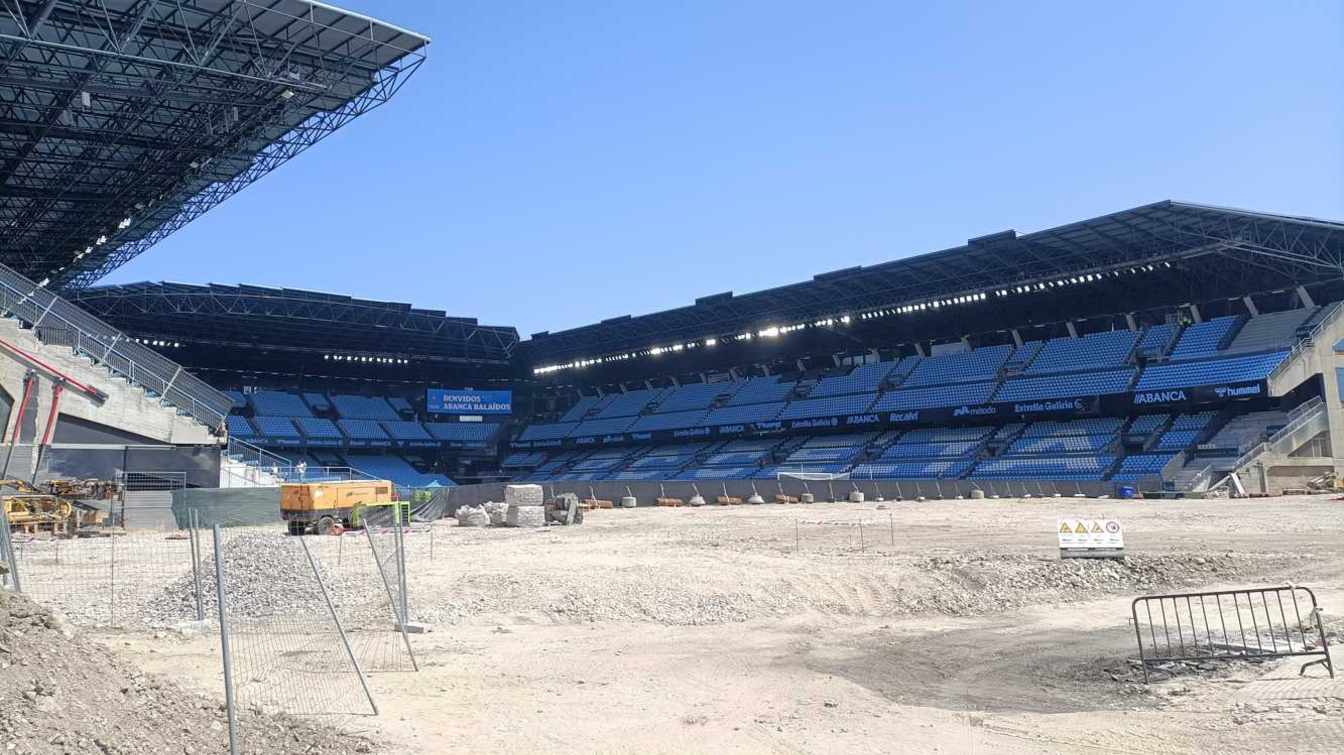Spain: Deportivo president says “no” to modernization of Riazor ahead of 2030 World Cup
source: StadiumDB.com; author: Jakub Ducki
 RC Deportivo stands today at a crossroads: on the one hand, it is carrying out ambitious modernization works at Riazor and preparing to open the club’s museum, on the other – it firmly rejects the city’s plans to expand the venue for the 2030 World Cup.
RC Deportivo stands today at a crossroads: on the one hand, it is carrying out ambitious modernization works at Riazor and preparing to open the club’s museum, on the other – it firmly rejects the city’s plans to expand the venue for the 2030 World Cup.
Advertisement
Museum and Marathon Tower
Juan Carlos Escotet, president of Deportivo and owner of Abanca, emphasized in an interview for the club’s media the importance of two symbolic projects: the RC Deportivo museum and the renovated Marathon Tower. We want them to be two places of memory and collective pride. A Coruña and Galicia have a symbol of identity in Deportivo, and both the museum and the Marathon Tower must be spaces that gather it, protect it, and project it into the future,
he stressed.
The museum is not intended only as a trophy exhibition. The club plans to create an educational space where younger generations will learn values such as effort, sacrifice, teamwork and pride in belonging to the local community. The museum will inspire future generations and serve as a tool to transmit the values of a club with over 100 years of history,
explains Escotet.
The project, which also includes the adaptation of the 45-meter-high Marathon Tower, was halted by a decision of the A Coruña City Council. The authorities point to the lack of required permits, while the club insists that all documents were submitted. This marks yet another point of tension in the already strained relations between Deportivo and the municipality.
Step-by-step modernization of Riazor
Regardless of disputes with the city, Deportivo is carrying out its own investment plan worth around €5 million. It includes the modernization of toilets – particularly adapted for people with disabilities – redevelopment of entrances, refurbishment of the electrical substation and improvements to safety systems.
The new club museum under the Tribuna Inferior stand is expected to be a highlight. The tour will cover three thematic areas: the White Zone
devoted to fans and the history of the stadium, the Golden Hall
with a journey through the club’s evolution since 1906, and the Blue Room
paying tribute to the golden era of Super Dépor. Visitors will also gain access to dressing rooms, the mixed zone and behind-the-scenes spaces of the venue.
Deportivo is also working on a complete transformation of the Deportienda club shop, with a new concept combining modern design, sustainability and advanced technologies, including 3D printing.
 © David Estany Garea / Concello A Coruña | Design of Estadio de Riazor
© David Estany Garea / Concello A Coruña | Design of Estadio de Riazor
The 2030 World Cup and refusal to expand
The hottest issue, however, concerns a possible stadium redevelopment linked to the 2030 World Cup. The city, led by Inés Rey, sees the tournament as a chance for a comprehensive transformation of Estadio Abanca-Riazor. Escotet’s answer is unequivocal: Deportivo cannot and should not put its financial balance at risk.
The president firmly opposes the idea of doubling the stadium’s capacity. Thinking about doubling its capacity not only makes no practical sense but would also mean a significant drop in revenue due to excess supply during the construction period. It would require a huge level of investment, considering other social needs. We do not find financial justification for doubling the stadium’s capacity when it is not necessary,
stresses Escotet.
Currently, average attendance at Riazor is around 22,000 spectators, ranking 10th in Spain. The club argues that instead of spending on massive expansion, the focus should be on improving fan comfort, accessibility and safety.
A Coruña versus Vigo
Deportivo’s stance contrasts with that of Celta Vigo. Its president, Marián Mouriño, openly supports increasing the capacity of Estadio Abanca Balaídos, pointing to the long waiting list for season tickets. This season, the club has issued 37,500 membership cards, proving high demand.
While Celta demonstrates readiness to work alongside local authorities, unity is lacking in A Coruña. The situation is further complicated by the fact that Malaga is already out of the race to host World Cup matches. Valencia and Vigo are waiting for final confirmation, while the fate of A Coruña remains uncertain.
 © Miguel Ciołczyk Garcia | Construction of Abanca Balaídos
© Miguel Ciołczyk Garcia | Construction of Abanca Balaídos
Riazor - a symbol of the city since 1941
Built in 1941, Riazor is one of Galicia’s most important sports venues. Its distinctive features include the now-demolished portico facing the sea and the still-standing Marathon Tower. The stadium has undergone several renovations: ahead of the 1982 World Cup, in the 1990s during Super Dépor’s golden era, and in the early 2000s to meet Champions League requirements.
Today, once again, Riazor faces a decisive moment. For some, it is an opportunity to transform the stadium into a World Cup arena. For others, it is a risky project that could destabilize the club financially.
Advertisement
 StadiumDB
StadiumDB